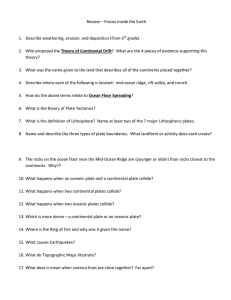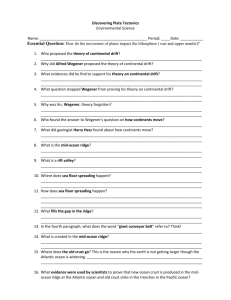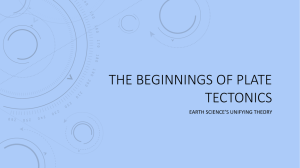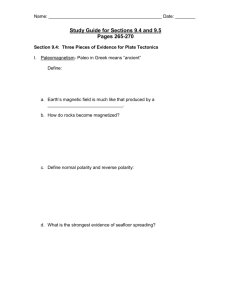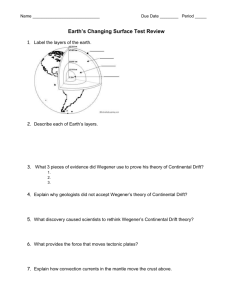Name Class _____ Date ______ Jorgenson 7th Grade The closer
advertisement
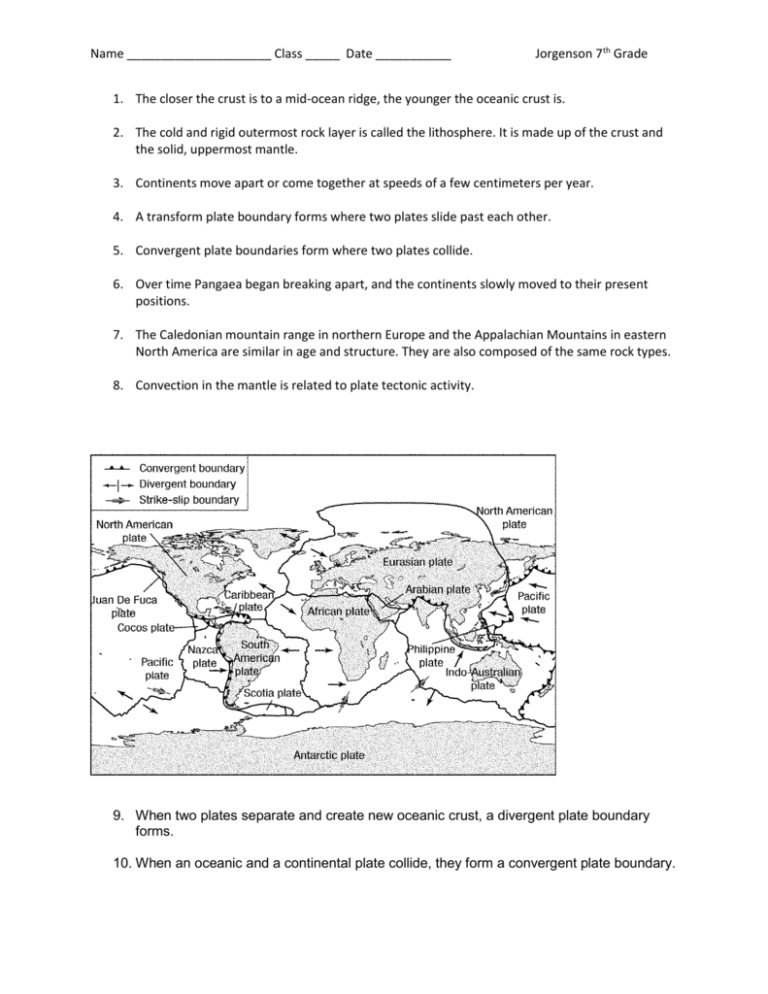
Name _____________________ Class _____ Date ___________ Jorgenson 7 th Grade 1. The closer the crust is to a mid-ocean ridge, the younger the oceanic crust is. 2. The cold and rigid outermost rock layer is called the lithosphere. It is made up of the crust and the solid, uppermost mantle. 3. Continents move apart or come together at speeds of a few centimeters per year. 4. A transform plate boundary forms where two plates slide past each other. 5. Convergent plate boundaries form where two plates collide. 6. Over time Pangaea began breaking apart, and the continents slowly moved to their present positions. 7. The Caledonian mountain range in northern Europe and the Appalachian Mountains in eastern North America are similar in age and structure. They are also composed of the same rock types. 8. Convection in the mantle is related to plate tectonic activity. 9. When two plates separate and create new oceanic crust, a divergent plate boundary forms. 10. When an oceanic and a continental plate collide, they form a convergent plate boundary. Name _____________________ Class _____ Date ___________ Jorgenson 7 th Grade 11. Continental drift was not widely accepted when it was first proposed because Wegener needed additional evidence to help support his hypothesis. 12. Alternating magnetic stripes in ocean crust support seafloor spreading because the stripes are identical on either side of a mid-ocean ridge 13. Wegener’s hypothesis of continental drift was not accepted until the discovery of mid ocean ridge. 14. Wegener proposed the hypothesis of continental drift, which suggested that continents are in constant motion on the surface of Earth. 15. Iron-rich minerals in cooling lava align with Earth’s magnetic field. When Earth’s magnetic field changes direction, minerals in fresh lava record a new magnetic signature. 16. Glacial grooves in rocks in Africa suggest that this continent was once located in a much colder place. Explain what is occurring at a., b., and c.



